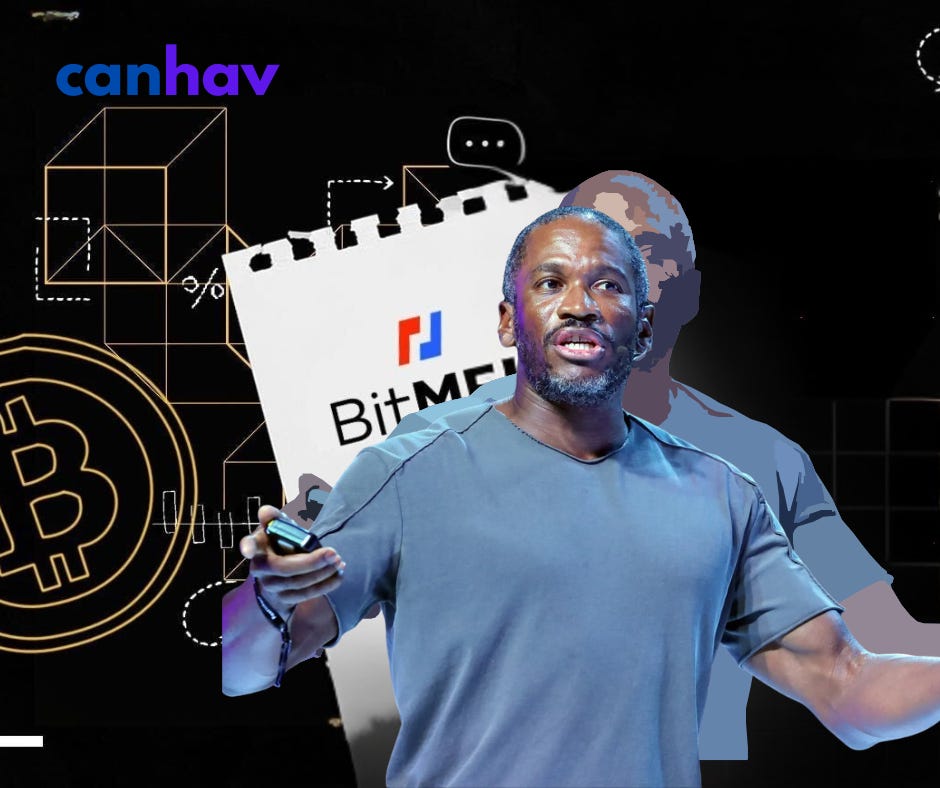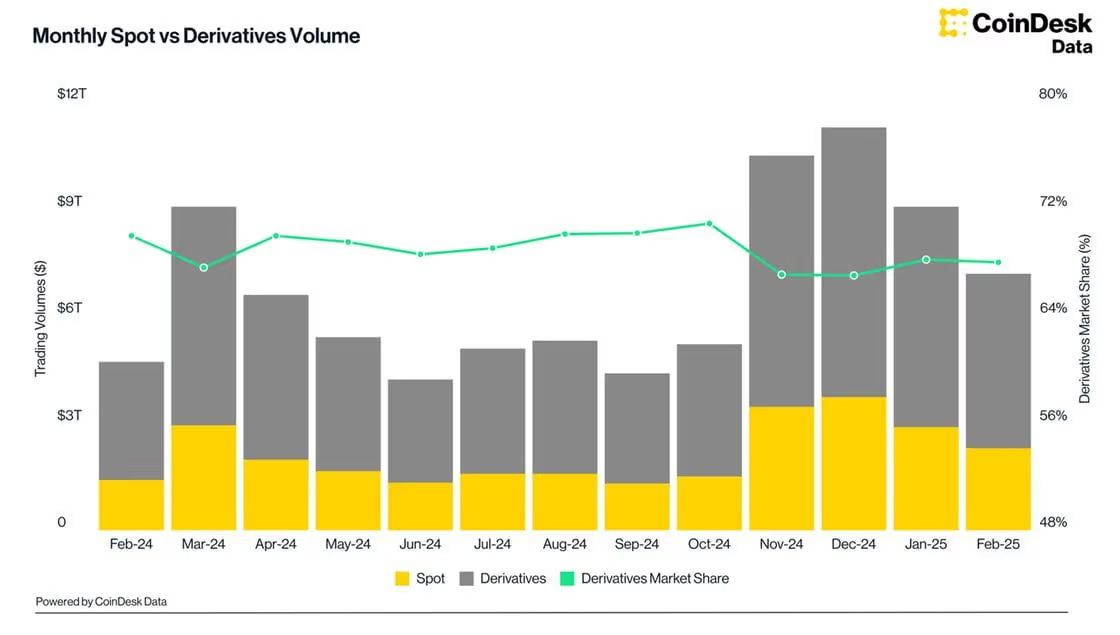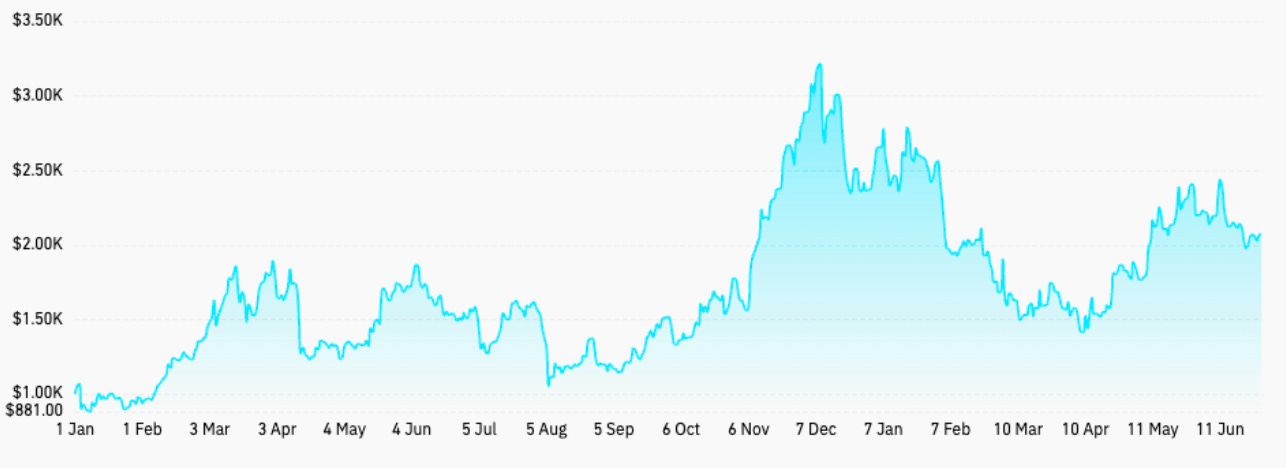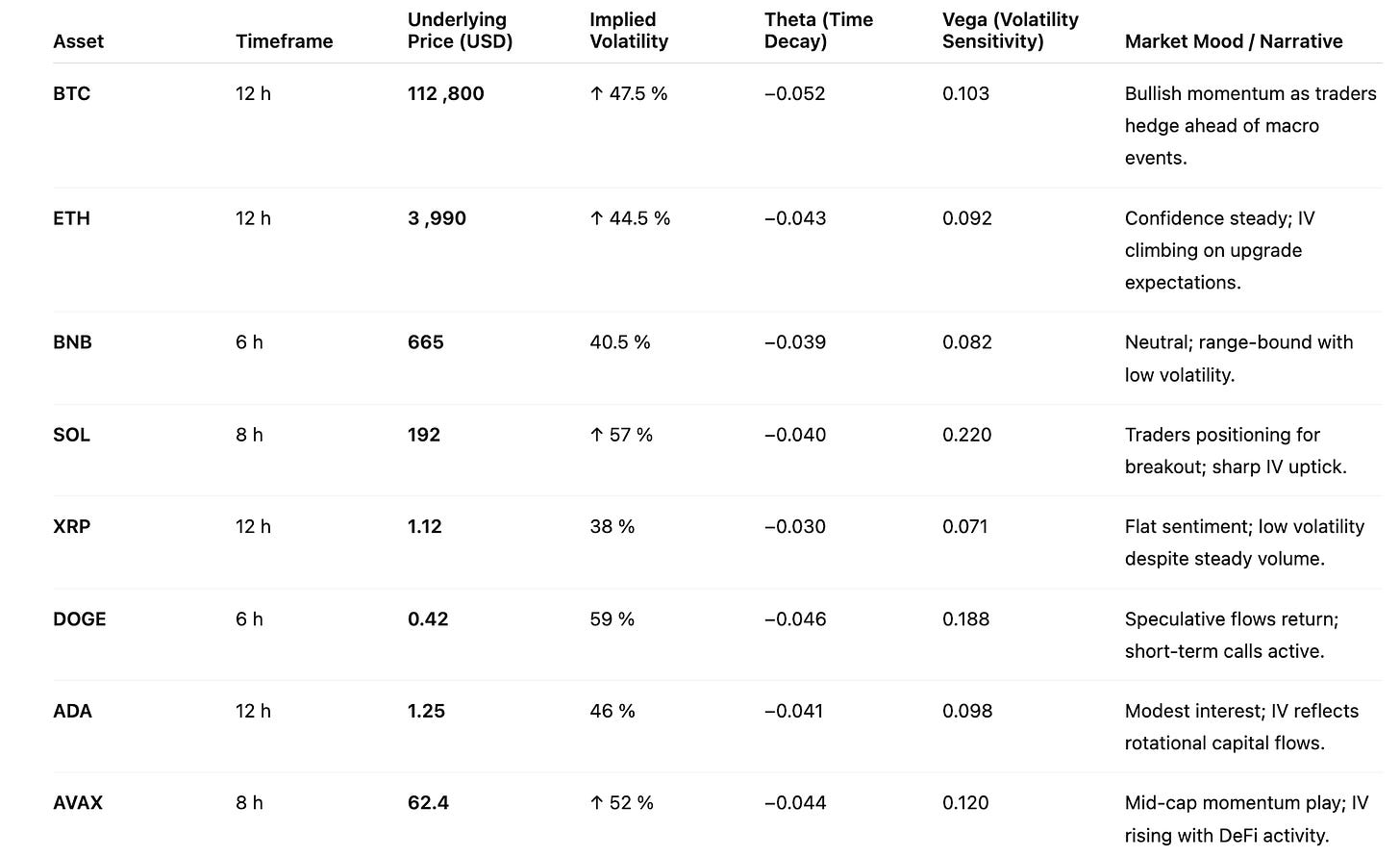Perpetual Futures vs Options: How Crypto’s Two Giants Shape the Derivatives Market
How Perpetuals and Options Define Market Behavior, and Shape the Future of On-Chain Finance.
Perpetual futures and options are the twin engines of the crypto derivatives market. Perpetuals dominate trading volume and mirror real-time conviction, while options capture emotion and expectation through volatility pricing. Together, they shape both the rhythm and psychology of crypto markets, revealing how traders think, hedge, and speculate.
As decentralized platforms like Hyperliquid and Lyra mature, these instruments are converging into a smarter, modular ecosystem where liquidity, risk, and innovation move as one.
Why Derivatives Rule Crypto?
In crypto, volatility isn’t just a feature, it’s the fuel. Every price swing, every liquidation cascade, every euphoric long and panicked short is powered by one invisible engine: derivatives.
Futures and options now dominate digital asset trading, accounting for over 75% of total crypto market volume. They’ve evolved far beyond tools for hedging risk,they define the tempo of the entire market. When Bitcoin sneezes, it’s usually the futures market catching the cold first.

Yet within this massive ecosystem, two instruments quietly shape the battlefield in different ways. Perpetual futures, born from the mind of BitMEX founder Arthur Hayes, turned leverage into a 24/7 adrenaline machine, contracts with no expiry, kept in line by funding rates that reward or punish traders depending on market bias. Meanwhile, options, the more mature sibling from traditional finance, give traders a way to express how confident they are about the future, and by how much.
These two instruments don’t just coexist; they compete and complement. Perpetuals dominate day-to-day speculation and liquidity. Options, though smaller in volume, influence expectations and volatility pricing. Together, they form the yin and yang of crypto derivatives: one drives direction, the other defines emotion.
This debate, futures versus options, matters more than ever in 2025. On-chain protocols like Hyperliquid are proving decentralized perpetuals can rival centralized giants like Binance Futures. Meanwhile, regulated options markets from Deribit, OKX, and CME Group are maturing fast, with institutions quietly pricing Bitcoin volatility like any other macro asset.
What’s emerging is not a war, but a balance, a market structure where perpetuals dictate the pulse, and options define the mood. To understand how traders hedge, speculate, or build new financial products, you first have to understand how these two instruments dance.
It’s easy to think perpetuals rule the market. But the data, from Binance and Hyperliquid, tells a more nuanced story. Let’s start by unpacking what makes perpetual futures tick.
The Mechanics of Futures and Perpetuals
Understanding Futures Contracts
Futures are one of finance’s oldest inventions, promises written in advance.
A futures contract is an agreement between two parties to buy or sell an asset at a predetermined price on a specific future date. What started as a way for farmers to secure fair crop prices has evolved into the backbone of global financial markets.
The idea is simple: you lock in a price today for something that will be delivered later. For centuries, this reduced uncertainty, rice traders at Japan’s Dōjima Rice Exchange in 1730 were already using futures to hedge against bad harvests. Fast forward to today, and the same principle applies to Bitcoin, Ethereum, and thousands of digital assets.
In crypto, futures serve two main purposes:
Hedging, protecting against price swings.
Speculation, betting on where the market will move next, often with leverage.
Modern futures allow traders to amplify exposure with borrowed capital, using margin to control large positions with a fraction of the capital. Exchanges like Binance Futures and Bybit became powerhouses by turning this into an accessible, high-volume playground for retail and professional traders alike.
But then, crypto did what it always does, it broke the mold.
Perpetual Futures: The Contract That Never Expires
Enter perpetual futures, or “perps.”

Invented by Arthur Hayes in 2016 for BitMEX, perps removed the one thing that made traditional futures cumbersome: expiry. Instead of rolling contracts every month, perpetuals run continuously, anchored to spot prices using a clever mechanism called the funding rate.
Here’s how it works:
When the market is bullish and long positions outnumber shorts, funding rates turn positive, longs pay shorts.
When the market is bearish, shorts pay longs.
This mechanism keeps the perp’s price close to the underlying spot price, allowing for 24/7 trading without resets. It’s elegant, volatile, and very, very crypto.
Platforms like Hyperliquid, Binance Futures, and dYdX have since taken the model further. Data from CoinGlass shows that perpetual contracts dominate crypto derivatives, regularly accounting for over 80 % of total global trading volume.
The rise of on-chain perpetuals is especially notable. Hyperliquid has proven that a decentralized derivatives protocol can compete head-on with centralized exchanges. Its order books are deep, latency is low, and the transparency of on-chain positions creates an entirely new level of market accountability.
Data Snapshot: Binance & Hyperliquid
Recent data from Binance and Hyperliquid paints an intriguing picture:
Even as prices stabilized, open interest (OI) stayed firm, a sign of sustained participation rather than panic. Positive funding rates across BTC and ETH show moderate bullish bias, while liquidation patterns (like ASTER’s) reveal how quickly sentiment can flip.
These subtle metrics: open interest, funding rates, volume, are the pulse of perpetual markets. Traders use them not just to gauge direction, but to sense mood. When funding turns extreme, emotions usually follow.
The Psychology of Perpetuals
Perpetuals attract a unique kind of trader: someone drawn to instant feedback. Because they run continuously, they mirror the emotional state of crypto itself, restless, reactive, and global. Funding rate spikes often predict crowd euphoria; sudden negative turns mark exhaustion.
For many, trading perps isn’t just about market movement, it’s about staying one heartbeat ahead of the herd.
But perpetuals aren’t the only game in town. There’s another instrument built not for direction, but for expression, one that measures how much the market feels, not just where it moves. Let’s step into the world of crypto options.
The Art and Science of Options
Calls and Puts: Building Blocks of Market Emotion
If perpetuals are the pulse of crypto, options are its nervous system, measuring fear, greed, and the probabilities in between.
At their core, options are contracts that give the right, but not the obligation, to buy or sell an asset at a specific price (the strike price) before a certain date (the expiry).
A call option gives the right to buy, used when you expect prices to rise.
A put option gives the right to sell, used when you expect prices to fall.
Each option carries a premium, the cost of taking that position. The premium reflects what the market thinks could happen, much like an insurance policy against volatility.
A trader buying a Bitcoin call at $100,000 isn’t just betting that BTC will go up, they’re expressing how likely they think that move is and how fast it might happen. That’s the art of options: translating emotion into numbers.
The Greeks: Reading the Market’s Mood
To quantify that emotion, options traders use metrics called the Greeks, named after Greek letters that measure different sensitivities:
Delta: How much the option’s price changes for every $1 move in the underlying asset.
Gamma: How fast Delta itself changes, a measure of momentum.
Theta: The silent thief, time decay that erodes option value as expiry nears.
Vega: Sensitivity to volatility, how much the option reacts to changing market chaos.
Rho: Sensitivity to interest rates, more relevant for institutions and macro traders.
In traditional finance, these help traders fine-tune portfolios. In crypto, they reveal emotion in motion. Rising Vega shows traders bracing for big swings. Negative Theta means the clock is eating their conviction.
Data Snapshot: Binance Options
Let’s look at how this emotion plays out in data. Here’s a snapshot of Binance Options activity across the top eight assets:
Across Binance’s options markets, implied volatility (IV) climbed steadily on Bitcoin (BTC) and Ethereum (ETH), a sign that traders expect movement, likely around upcoming macro events and network milestones. Solana (SOL) and DOGE showed sharper IV spikes, reflecting speculative flows and event anticipation.
In contrast, BNB, XRP, ADA, and AVAX stayed relatively calm, with low Vega and mild Theta decay, typical of mid-term positioning rather than day trading frenzy.
Overall, traders aren’t panicking; they’re pricing in movement, not chaos, a sign of a market preparing for volatility rather than reacting to it.
Reading Between the Lines: What the Data Says
Options data tells us something the spot and futures markets can’t: what traders believe will happen next.
When volatility rises ahead of an event, like an ETF decision, FOMC meeting, or network upgrade, options traders are the first to signal it.
That’s the quiet genius of options: they don’t just react to movement; they anticipate it.
Why Options Remain Mostly CeFi
Despite crypto’s love for decentralization, options are still largely dominated by centralized exchanges (CeFi) like Deribit, OKX, and Binance.
There are several reasons for this:
Liquidity gravity - Deep order books attract large trades, and most liquidity still sits in CeFi.
Regulatory comfort — Institutions prefer KYC-compliant, regulated venues like CME Group for large BTC and ETH options exposure.
UX and margin efficiency — CeFi platforms provide smooth onboarding, unified collateral, and integrated risk management that DeFi protocols are still perfecting.
But the winds are changing. Platforms like Lyra, Dopex, and Aevo are pioneering on-chain options with smart-contract-based risk engines, shared liquidity pools, and composable hedging strategies. They’re not just clones of Deribit, they’re experiments in transparent, decentralized risk.
Structural Insight
This complexity explains why options remain mostly CeFi for now: they demand accurate pricing, stable liquidity, and precise margin systems. The math is harder, the risk models heavier, and the users fewer. Yet that’s exactly where innovation is accelerating.
As on-chain analytics mature and liquidity networks deepen, options may soon follow the path perps once took, from centralized dominance to decentralized reinvention.
Perpetuals dictate the market’s pulse, while options define its mood. But to truly see how they shape crypto’s structure, we need to put them side by side, comparing leverage, margin, volatility, and psychology. That’s where the real insight begins.
The Future of Crypto Derivatives
From Leverage to Liquidity Intelligence
Derivatives began as simple tools to manage risk. Today, they’re becoming complex systems that manage information.
The next wave of crypto derivatives isn’t about higher leverage or flashier interfaces, it’s about intelligence.
Across both centralized and decentralized markets, we’re seeing the rise of hybrid models: exchanges blending human intuition, machine learning, and tokenized liquidity to build more adaptive markets.
Perpetuals are evolving into smart contracts that self-balance funding rates through dynamic liquidity pools, think Hyperliquid, Drift, or Aevo’s hybrid architecture.
Meanwhile, options are starting to look more like programmable risk modules, automatically rebalancing portfolios based on volatility triggers.
This shift is turning derivatives into composable building blocks for DeFi, tools that other protocols can plug into, remix, and automate.
Beyond today’s futures and options, a quiet evolution is underway. Projects such as Synthetix, Lyra, and Aevo are experimenting with tokenized risk and automated vaults, while institutions like CME and Galaxy blend on-chain liquidity with traditional derivatives.
These developments point to a single direction: crypto derivatives are maturing into programmable, modular finance, but for now, the heartbeat still belongs to perpetuals, and the mind to options.
Conclusion: Where Volatility Finds Its Balance
Crypto derivatives began as experiments in leverage and have become the language of modern market structure. Futures brought immediacy, the power to express conviction in real time. Options brought nuance, the ability to price uncertainty and emotion. Together, they form the foundation of crypto’s risk economy.
From BitMEX’s perpetual swap to Deribit’s global options desk, these two instruments have quietly rewritten how traders interact with volatility. Futures dictate the pace; options define the depth. One shows what the market is doing, the other what it’s thinking.
What we’re watching now isn’t a rivalry, but a synthesis.
Perpetuals and options are learning from each other, perpetuals adopting structured risk controls and volatility analytics, options embracing on-chain automation and decentralized liquidity.
The result is a more adaptive, modular market where risk can be expressed, shared, and traded in ways traditional finance never imagined.
The maturity of crypto derivatives also marks a philosophical shift. They no longer exist just for speculation, they’re tools of translation between human behavior and financial logic. Funding rates echo crowd sentiment; implied volatility maps collective expectation. The chaos of crypto has become measurable, sometimes even predictable.
But in the end, one truth remains constant: every derivative is still a story about confidence and fear. Futures capture our instant reactions. Options capture our long-term imagination. And together, they make crypto not only tradeable, but human.
As the market moves toward AI-driven risk systems and tokenized collateral, that human pulse will remain. Because no matter how advanced the math gets, the real asset being traded is belief, belief that we can quantify risk, outsmart chaos, and keep building through volatility.
The future of crypto derivatives isn’t about more leverage. It’s about smarter expression.
And that’s where perpetuals and options, two seemingly opposite instruments, finally converge, in a market that mirrors both our logic and our emotion.
Subscribe to CanHav on crypto trends, derivatives, stablecoin strategies, and on-chain finance. Get alerts on 2026 updates!







